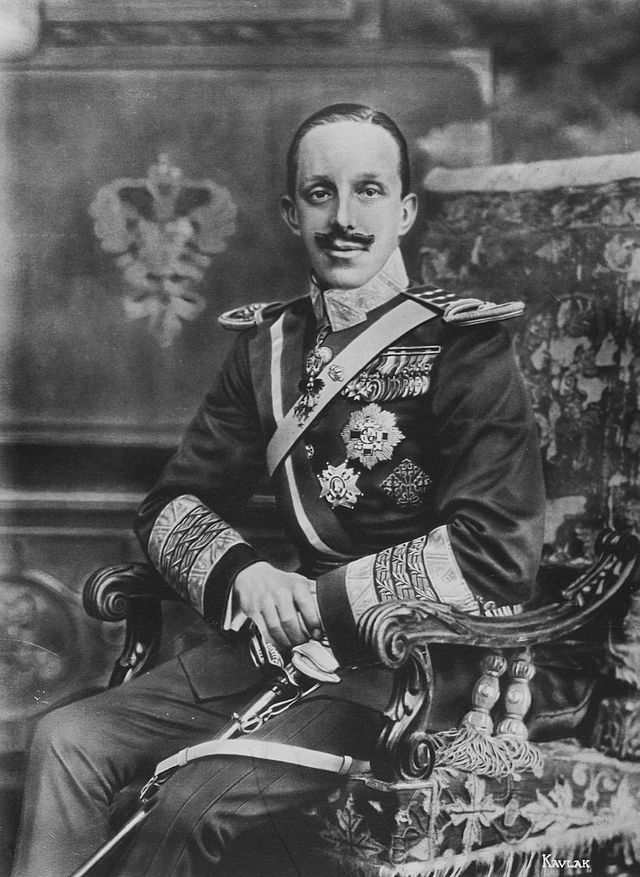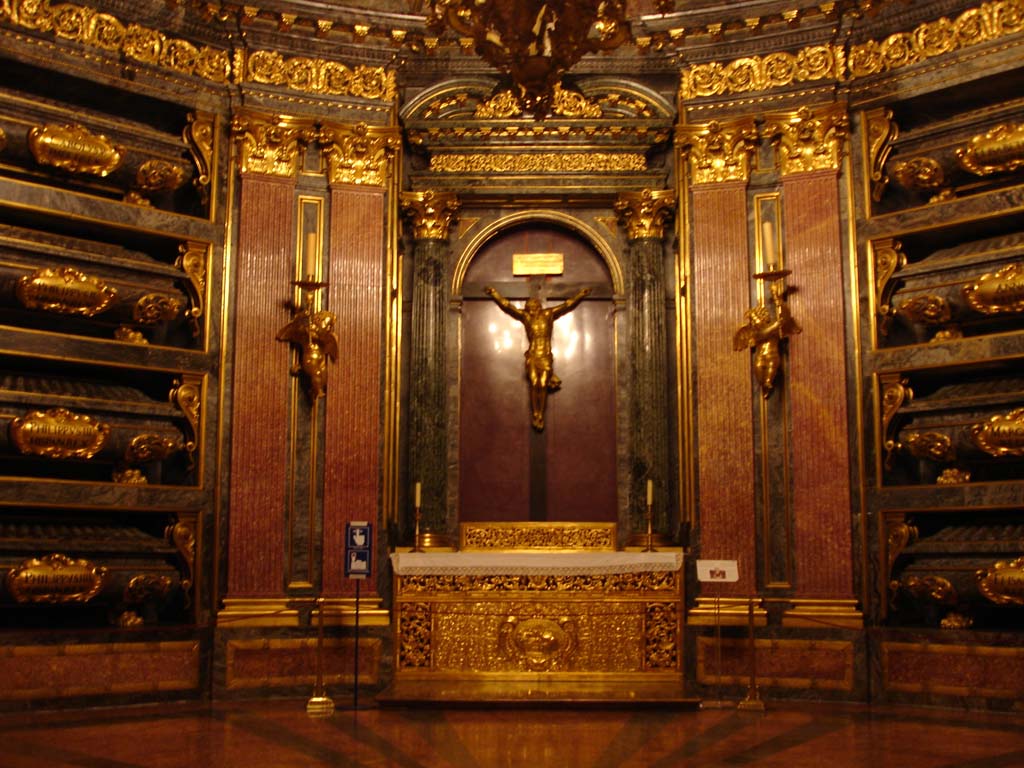by Scott Mehl © Unofficial Royalty 2015

King Alfonso XIII of Spain – photo: Wikipedia
King Alfonso XIII of Spain was the Spanish sovereign from his birth on May 17, 1886, until the establishment of the Second Spanish Republic on April 14, 1931. He was born Alfonso León Fernando María Jaime Isidro Pascual Antonio de Borbón y Habsburgo-Lorena, the son of the late King Alfonso XII of Spain and Archduchess Maria Christina of Austria. Because his father had died before his birth, his mother served as Regent while awaiting his birth. She would remain Regent until Alfonso turned sixteen and took control of the monarchy.
He had two older sisters:
- Infanta Mercedes, Princess of Asturias (1880 – 1904), married Prince Carlos of Bourbon-Two Sicilies, had three children
- Infanta Maria Teresa (1882 -1912), married Prince Ferdinand of Bavaria, Infante of Spain, had four children
While on a state visit to the United Kingdom in 1905, King Alfonso met Princess Victoria Eugenie of Battenberg, the daughter of Prince Henry of Battenberg and Princess Beatrice of the United Kingdom, the youngest daughter of Queen Victoria. The two soon began corresponding and developed quite strong feelings for each other. However, several obstacles in their relationship needed to be resolved before they could consider marriage. The first issue was religion. Alfonso was Catholic while Victoria Eugenie was Protestant. The second issue was the potential of bringing hemophilia into the Spanish royal family. As Victoria Eugenie’s brother Leopold suffered from the disease, there was a very good chance that Victoria Eugenie herself was a carrier. And the third obstacle was Alfonso’s mother, the Dowager Queen. She did not feel the Battenbergs were royal enough due to the morganatic marriage that started that family, and she wanted her son to marry a member of the Habsburg dynasty of Austria. Eventually, all three obstacles were overcome. Victoria Eugenie (known as Ena) agreed to convert to Catholicism, and despite the risk of hemophilia, Alfonso still chose to marry her. Her uncle, King Edward VII of the United Kingdom, raised her style to Royal Highness to remove any question of the marriage being equal.

Assassination attempt at Alfonso and Victoria Eugenie’s wedding, 1906.
The couple married on May 31, 1906, at the Royal Monastery of San Jerónimo in Madrid, Spain in a wedding attended by many royals from around the world. While the wedding procession was returning to the Royal Palace, an assassination attempt was made on the King and his new Queen. Both Alfonso and Ena were unharmed, however, several guards and bystanders were killed or injured.
Eventually, the couple would have seven children:
- Infante Alfonso, Prince of Asturias (1907-1938) – married (1) Edelmira Sampedro y Robato, no children, divorced (2) Marta Esther Rocafort-Altuzarra, no children
- Infante Jaime, Duke of Segovia (1908-1975) – married (1) Emmanuelle de Dampierre, had two sons, divorced (2) Charlotte Luise Auguste Tiedemann, no children
- Infanta Beatriz (1909-2002) – married Alessandro Torlonia, 5th Prince of Civitella-Cesi, four children
- Infante Fernando (1910-1910) – stillborn
- Infanta María Cristina (1911-1996) – married Count Enrico Marone, four children
- Infante Juan, Count of Barcelona (1913-1993) – married Princess Maria Mercedes of Bourbon-Two Sicilies, four children including King Juan Carlos of Spain
- Infante Gonzalo (1914-1934) – not married
Alfonso and Ena’s marriage was strained from the birth of their first son Alfonso. Shortly after his birth, it was discovered that he was suffering from hemophilia. Of their children, only their oldest and youngest had the disease. Despite knowing the possible risk before they married, King Alfonso blamed Ena for bringing the disease into the royal family and distanced himself from her. He had several mistresses and fathered at least 6 illegitimate children.
In 1923, General Miguel Primo de Rivera seized power in a military coup, with the support of King Alfonso.Alfonso named him Prime Minister and Primo de Rivera served as dictator for the next seven years. In 1930, after falling from grace with the King and losing much of his public support, Primo de Rivera resigned. Having been an ally for most of that time, the King also suffered a huge lack of support from the Spanish people. In 1931, elections were held, resulting in the establishment of the Second Spanish Republic. Alfonso and his family fled Spain, settling in France and then Italy.
Soon after going into exile, King Alfonso and Queen Victoria Eugenie went their separate ways. He remained in Rome, while Ena settled in Switzerland. On January 15, 1941, feeling that his life was coming to an end, Alfonso formally abdicated in favor of his third son, Juan, Count of Barcelona. His two older sons had both renounced their claims to the throne in the early 1930s. Just weeks later, on February 28, 1941, King Alfonso XIII died at the Grand Hotel in Rome, Italy. He was just 54 years old. His funeral was held at the Church of Santa Maria degli Angeli e dei Martiri in Rome, and he was buried at the Church of Santa Maria in Monserrato degli Spagnoli, the Spanish national church in the city. In 1980, his remains were returned to Spain and interred in the Pantheon of Kings in the Royal Crypt of the Monastery of El Escorial.

The Pantheon of the Kings. Photo: Wikipedia
This article is the intellectual property of Unofficial Royalty and is NOT TO BE COPIED, EDITED, OR POSTED IN ANY FORM ON ANOTHER WEBSITE under any circumstances. It is permissible to use a link that directs to Unofficial Royalty.
Kingdom of Spain Resources at Unofficial Royalty
- Kingdom of Spain Index
- Line of Succession to the Throne of Spain
- Monarchs of a United Spain (since 1516)
- Profiles of the Spanish Royal Family
- Spanish Royal Burial Sites
- Spanish Royal Christenings
- Spanish Royal Dates
- Spanish Royal FAQs
- Spanish Royal Links
- Spanish Royal Weddings
- Spanish Royal Residences
